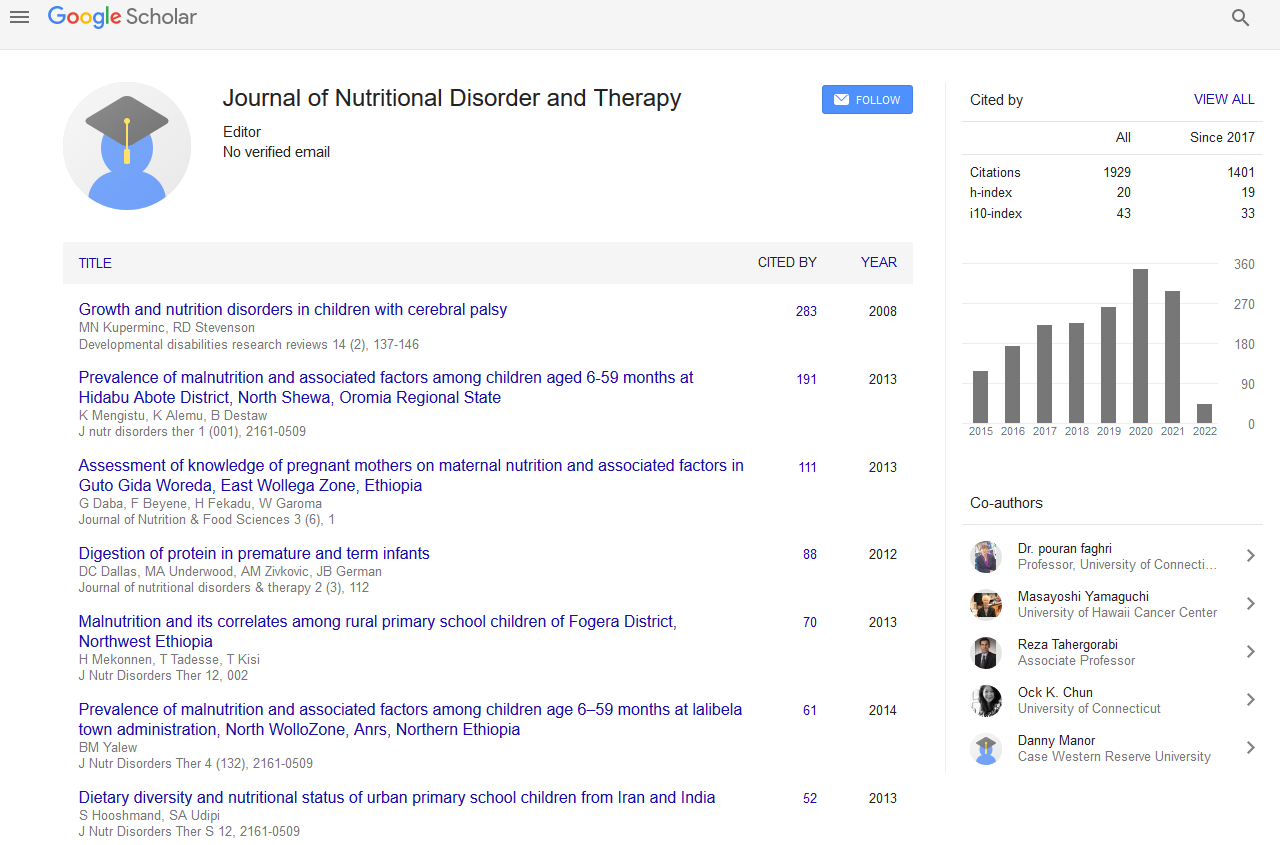Indexed In
- Open J Gate
- Genamics JournalSeek
- Academic Keys
- JournalTOCs
- Ulrich's Periodicals Directory
- RefSeek
- Hamdard University
- EBSCO A-Z
- OCLC- WorldCat
- Publons
- Geneva Foundation for Medical Education and Research
- Euro Pub
Useful Links
Share This Page
Journal Flyer

Open Access Journals
- Agri and Aquaculture
- Biochemistry
- Bioinformatics & Systems Biology
- Business & Management
- Chemistry
- Clinical Sciences
- Engineering
- Food & Nutrition
- General Science
- Genetics & Molecular Biology
- Immunology & Microbiology
- Medical Sciences
- Neuroscience & Psychology
- Nursing & Health Care
- Pharmaceutical Sciences
Abstract
Protein-Energy Intakes and Nutritional Status of in-School Adolescents in Baham, Cameroon
Hernan Brice Kenmogne-Domguia, Roger Ponka and Elie Fokou
Poor nutritional status during adolescence is an important determinant of health outcomes at a later stage of life. Therefore, attention should be given to adolescent health and nutrition. The aim of the present study was to investigate the protein-energy intakes and nutritional status of in-school adolescents in Baham, Central sub-division of the upper plateau division of the western Region of Cameroon. A total of 770 in-school adolescents of Baham aged between 10 and 18 years were recruited for the study. Protein and energy intakes were estimated based on their food consumption recorded using a 7-days food diary. Protein and energy intakes obtained were compared with reference values. Anthropometric measurements included weight and height were analysed using the World Health Organizations’ (WHO) AnthroPlus® version 1.0.2 statistical software. No significant differences were observed in the daily intakes in protein and energy (p> 0.05) between male and female adolescents from 10 to 13 years. However, for adolescents aged 14 to 18, the daily intakes in proteins and energy were significantly higher for males compared to females (p<0.05). For all the subjects the protein intake was significantly higher than the needs while the energy intake was significantly lower than the needs (p<0.05). The prevalence of stunted and wasted was significantly higher in males than the females (p<0.05). In the contrary, the prevalence of overweight is significantly higher for females than for males (p<0.05).These results will be useful for nutritional advice and intervention in adolescent males and females in this community.


